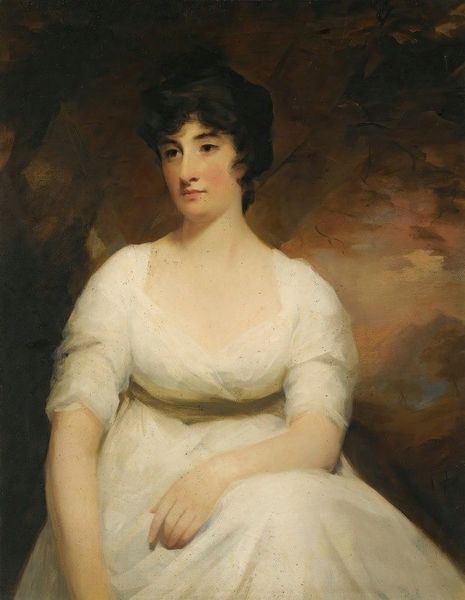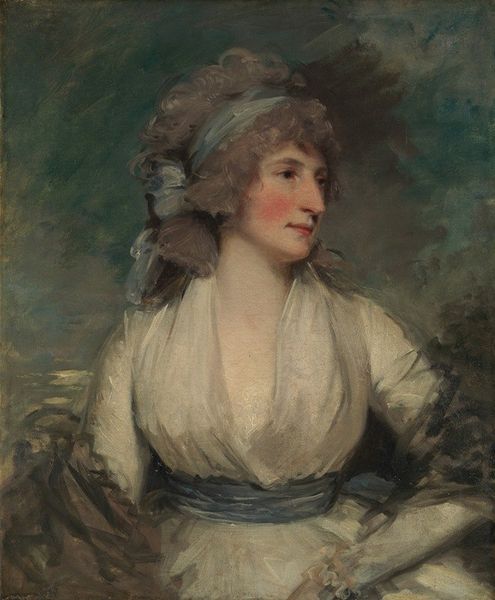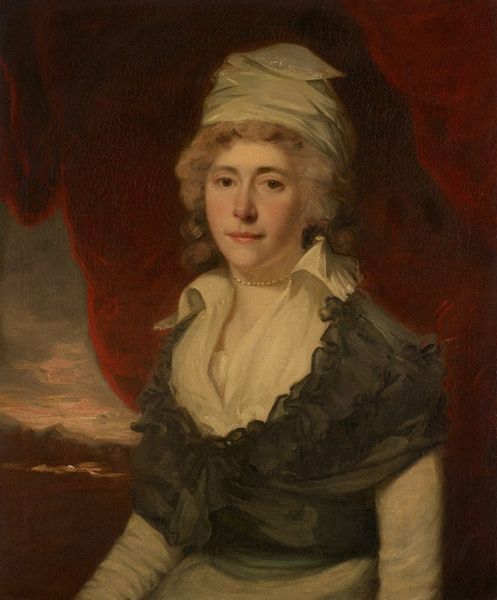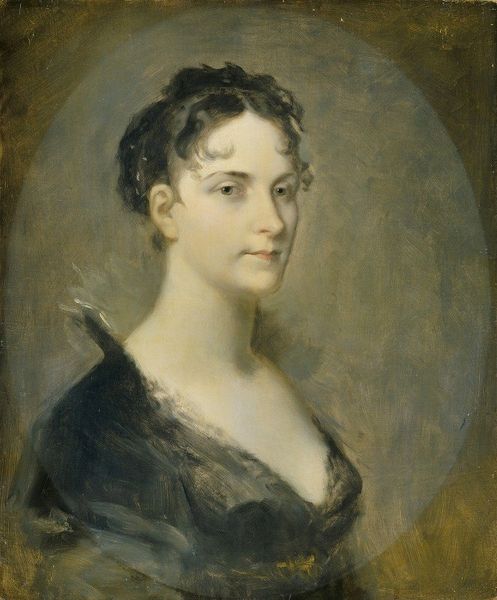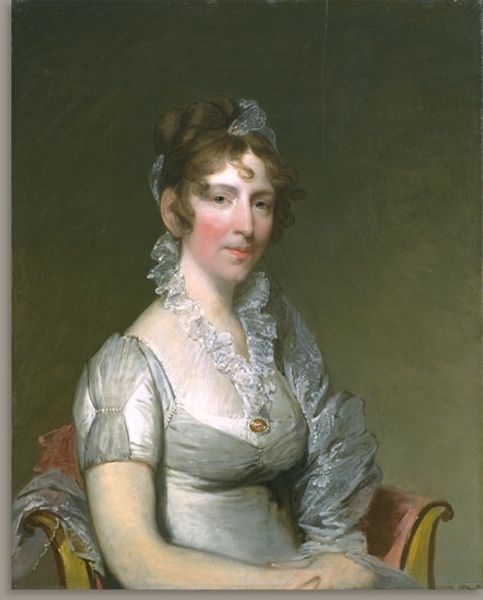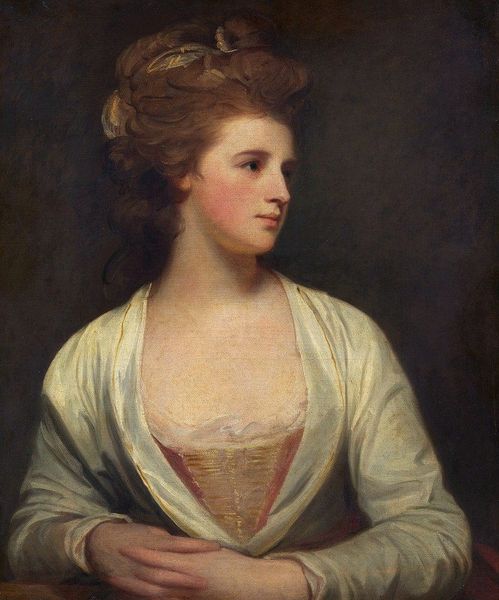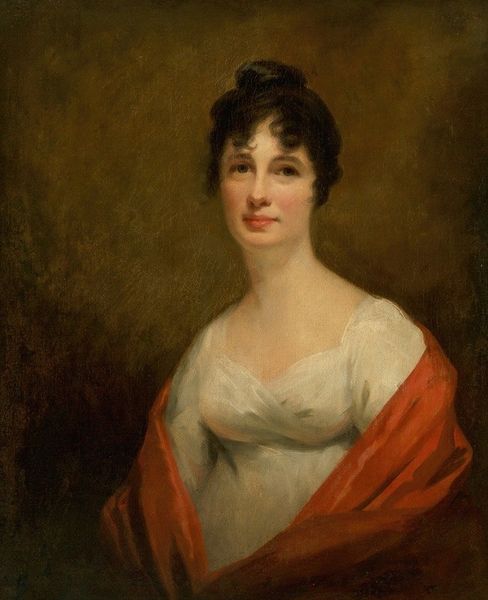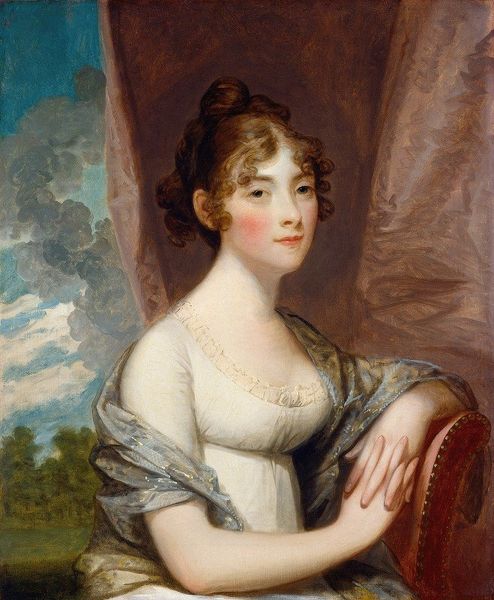
painting, oil-paint
#
portrait
#
figurative
#
painting
#
oil-paint
#
figuration
#
romanticism
Copyright: Public Domain: Artvee
Curator: This is Henry Raeburn's "Mrs. George Hill," likely painted between 1790 and 1800. It’s an oil on canvas portrait typical of the late 18th-century British Romantic style. Editor: She looks a bit wistful, almost melancholic. The dark, turbulent background contrasts sharply with her pale dress, adding to the drama. Curator: The backdrop indeed mimics the wild landscapes Romantic painters so favored, placing her within a dramatic setting which at the time was indicative of high social standing, a demonstration of both wealth and taste. Editor: Taste is interesting because there’s an undeniable beauty in the sitter, but her presentation feels simultaneously staged and vulnerable. Is it her class, or perhaps the patriarchal gaze defining how women of her time were viewed? Curator: It's likely both. Portraiture served a specific social function, representing status and lineage. But Raeburn's skill lies in imbuing his subjects with individuality; this hints at the tensions women of that era faced. There were strong social pressures, including expectations around the female disposition and family obligation. Editor: It’s that tension, the quiet rebellion flickering in her eyes perhaps, that grabs me. There is almost an internal resistance to the pose. What did portraiture like this really *do*? How did it solidify the political norms of the time? Curator: Precisely! The commissioning of portraits was intrinsically linked to power. Raeburn became a leading portraitist of Edinburgh's elite during a time of social and political change in Scotland, with these images reinforcing societal hierarchies even while new ideas were circulating. Editor: The nuances within these images, where class presentation meets personality, allows the painting to transcend mere depiction and provide nuanced glimpses into the lives of people during monumental times. Curator: I agree. What’s great here is considering how portraiture played a performative role during Scotland’s Age of Enlightenment and Mrs. Hill's position as a genteel subject situated right in its midst. Editor: Ultimately, paintings such as "Mrs. George Hill" invite us to examine those systems through a more thoughtful approach of art.
Comments
No comments
Be the first to comment and join the conversation on the ultimate creative platform.
